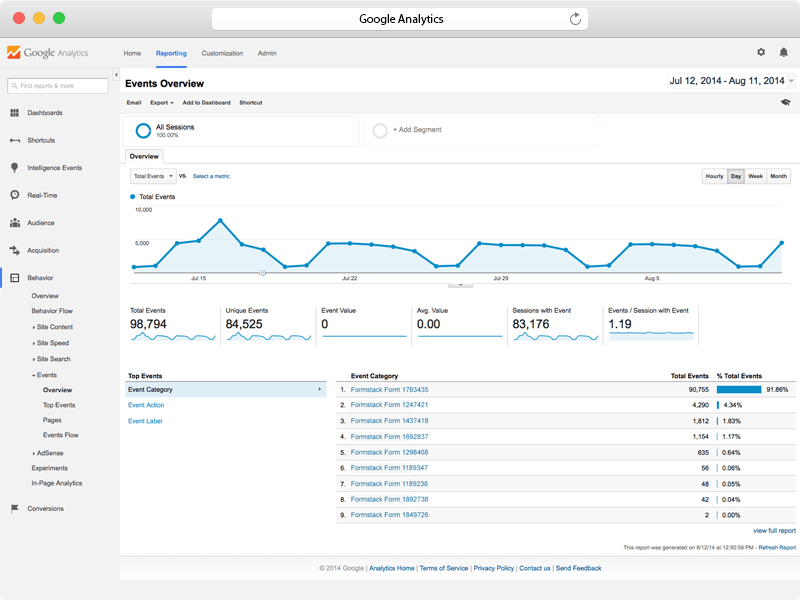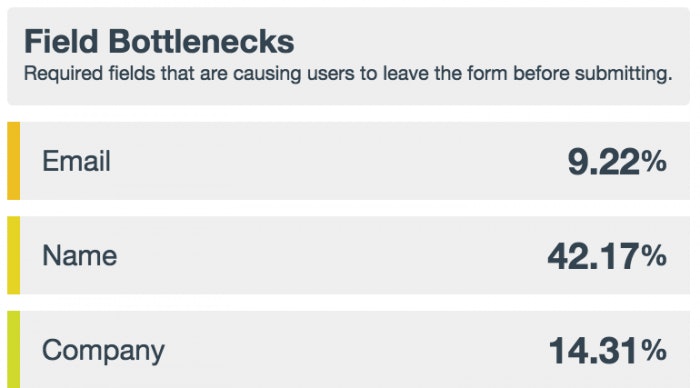As digital marketers, we all know the daily struggle. There’s so much to be accountable for and so little time. When we’re not identifying, defining, and attracting strong leads, we’re measuring, testing, and fine-tuning the campaigns we use to convert them. It can all get a little overwhelming, but it’s much more manageable if you’re effectively using the tools that are at your disposal.
You’re probably using lead generation forms in your campaigns, but are you using them in the best way? Online forms are one of the most important points of conversion, whether you’re using them on a product landing page, for an upcoming event, or within a sales email. If used properly, they have the power to transform your marketing strategy.
Here are three advanced online form strategies you can use to test and evolve your digital marketing efforts:
1) Looking at More Than Just Responses
Online forms are the gateways to knowledge. There is so much you can learn from prospects and current customers through an optimized survey or lead gen form. But some of the best insights are found beyond the actual responses you receive.
At Formstack, we like to pair our forms with Google Analytics:
You’re probably using GA to optimize your campaigns already, but are you using the platform to specifically analyze your online forms? Connecting your forms to Google Analytics opens up a wealth of data insights you can use to increase conversions. For example, if your goal is to optimize your mobile efforts (which should be a primary focus for 2017), you could look at how much of your form traffic is coming from mobile, which conversion paths your mobile leads are taking, which devices your best customers are using, and how long visitors remain on your forms. You can then use these insights to optimize your future efforts and better connect with your intended audience.
When looking at the insights you find in Google Analytics, make sure you consider all the possible weak areas in your form. For example, if you find that a high number of users are accessing your forms via smartphone, look at your form and ask questions like:
- Is the content easy to read?
- Is the form easy to fill out?
- Is the call-to-action clear?
- Is important information clearly visible?
- Is this page attractive? Does it load quickly?
This will help you use the insights you get from Google Analytics in the best way, and ensure that your optimization efforts lead to better results.
2) Removing Bottlenecks and A/B Testing
Once you’ve gathered insights on your data, it’s time for some optimization magic. Since forms are one of the most common points of conversion, you want to make sure they’re doing their job and bringing you lots of leads. One way to do this is to look for field bottlenecks: the areas of your form that can discourage people from hitting the Submit button.
Look for questions that might be confusing or unnecessary. Chances are these questions are causing prospects to halt in their tracks and leave a form they would have otherwise completed. Ouch!
If you want to dig a bit deeper into form performance, start utilizing A/B testing. This optimization technique lets you test variations of your form to find out what resonates with your target market (and what doesn’t). The Formstack team has used A/B testing extensively to test our own forms, and we’ve found some surprising results.
For example, we’ve discovered that some best practices for online forms do not always win. One of the most common tips you’ve probably heard is to keep your forms short because too many questions can harm your conversion rates. But do they really? We ran an A/B test to gauge the impact of adding a few fields to our demo request form, and we saw no significant change in submissions. We expected to see a drop in conversions, but the “shorter forms lead to higher conversions” best practice didn’t hold up. In this case, we were able to gather more qualifying information without damaging our conversion rate.
This is the beauty of A/B testing. Don’t be afraid to challenge best practices. Test everything on your form (including messaging and submit button colors or sizes) to see what works best for your audience. Just be sure not to test more than one element at a time, or you won’t have certain data to show what changes were caused by which elements!
3) Integrating Your Technology Stack
Finally, one of the greatest advantages online forms give you is the ability to connect to the apps your team uses everyday. Form integrations provide really simple ways to save time and better align some of your various marketing channels (a problem that 30% of marketers still struggle with).
Want to keep your sales team in the loop on new leads? Connect your form to a CRM like Salesforce or HubSpot to auto-create new opportunities. Need to update your email lists? Integrate with your preferred email marketing platform to create new contact profiles and update existing records. And if you need to collect payments, just hook up your form to a secure payment processor and watch the dough roll in.
Whichever online form optimization strategies you adopt, it’s important to never stop improving your lead generation and lead nurturing efforts. While these strategies will get you started on the path of online form optimization, there are many more opportunities to explore.
If you’re looking for a powerful way to optimize your online forms that is not so labor intensive, check out Formstack’s all-new Conversion Kit. While I may be a bit biased, I genuinely believe these tools can help you easily make better form decisions that will increase your conversion rates and amplify your lead generation efforts.







